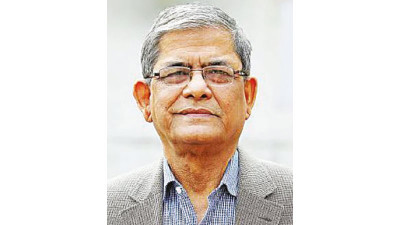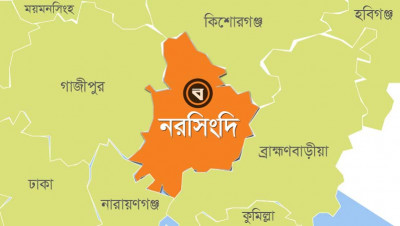
The Geological Survey of
Bangladesh (GSB) has determined the market value of existing mineral resources
in Bangladesh. According to the organization's estimates, the value of
naturally available mineral resources in the country exceeds 2.26 trillion
dollars. This amount, when converted to Bangladeshi currency, is 241.97
trillion takas. However, the value of natural gas in the country has not been
included in the GSB calculations. Stakeholders have indicated that if the value
of natural gas is taken into account in the GSB calculations, the estimated
value of existing mineral resources in the country will increase by several
trillion dollars.
Government investment in the
extraction of these valuable mineral resources is significantly inadequate. GSB
has revealed that no specific exploration has been conducted regarding the real
reserves, proven reserves, and reserves of the mineral resources within the
country. The relevant policymakers also state that despite the abundance of
mineral resources in the country, there has been no significant interest from
the government at several times. As a result, the amount of investment in this
sector has been consistently minimal year after year.
Experts argue that if
initiatives are taken for the exploration and extraction of mineral resources,
it can become a major source of foreign currency earnings for the country.
Moreover, utilizing these resources could even provide a solution to the
ongoing energy crisis and ensure security.
We talked to Professor
Badrul Imam, a geologist to learn about the current status of mineral resources
in the country. He said to Bonik Barta, "In our country, natural gas is
being extensively extracted among the existing mineral resources. The proven
reserves of this gas are being depleted continuously. We believe that there is
more gas in the country and it can be extracted. However, the government's
initiatives and investments in this regard are not satisfactory. There is no
significant effort by the government to extract coal on a large scale. In the
northern part of Bangladesh, there are five mines. In addition, there is a huge
deposit of limestone beneath the soil in Joypurhat, but it is not being
extracted."
The Cox's Bazar region and
the Brahmaputra River also have mineral deposits. Valuable mineral deposits are
also present in the major rivers. However, stakeholders complain that there is
insufficient effort to extract them. However, there is some local extraction of
sand and a minimal amount of stone extraction.
Former Petrobangla employee
Mr. Farid Uddin has also served as the Country Director of United Meridian, an
American research organization for oil and gas exploration. Regarding the
matter, he stated, "Bangladesh has abundant natural resources in its seas
and land. The presence of gas and coal is particularly evident. However, proper
research and investment have not been made to harness these resources. As a
result, our dependence on gas imports has increased year after year."
An expert in the field of
energy and mineral resources said to Bonik Barta, "Although other
resources have been excluded, there is a strong possibility of gas and
petroleum reserves only in the Chattogram region of the country. Despite
recommendations from various international advisory organizations, no
initiative has been taken in this regard. Unfortunately, the Department of
Petroleum has taken up a plan for drilling 46 coal wells. There is no effort in
terms of exploration in Chattogram. The government must invest appropriately in
potential areas of natural resources and reduce dependency on imports.
Otherwise, the uncertainty of the petroleum sector will continue."
According to GSB, the
estimated market value of the discovered mineral resources in the country is
primarily based on the quantity obtained from the existing resources. If the
possibilities are reviewed, it may be possible to determine the quantity and
appropriate size of these resources. Furthermore, it will be possible to assess
the natural economic value of the resources based on market prices.
From the sources of the
Ministry of Power, Energy, and Mineral Resources, we got to know that the
Geological Survey of Bangladesh has determined the market value of eight types
of discovered mineral resources in the country to be 2.26 trillion dollars.
Coal constitutes the majority with over 7.25 billion tons. Considering the
market price of $175 per ton, the value of this quantity of coal stands at 1.26
trillion dollars. Additionally, there is a probable reserve of pit coal of
around 600 million tons, which at $60 per ton, amounts to approximately 35.9
billion dollars.
In addition, there is a
reserve of 25.27 billion tons of limestone, with a value of 758.1 billion
dollars at $30 per ton. Hard rock has a reserve of 201 million tons, valued at
5.42 billion dollars. The value of 230 million tons of white clay is 29.9
billion dollars. Silica has a reserve of 5.117 billion tons, valued at 61.4
billion dollars. The value of 2.20 billion tons of gravel is 33 billion dollars,
and the value of 620 million tons of iron is 68.8 billion dollars.
GSB's Director General
Mohammad Elias Hossain said to Bonik Barta, `GSB's main work is mineral resources
exploration. Many of the discovered minerals are still in the exploration
phase. We have estimated approximate values for these minerals. If we conduct
land surveys or feasibility studies for these mineral resources, we can obtain
a more accurate assessment. The amount of money involved can increase or
decrease accordingly.'
GSB believes that detailed
research is needed to determine whether these discovered mineral resources can
be extracted. Specifically, regarding coal, the top officials of the
organization stated that coal mines are located deep in the soil. The
technology for extracting such deep coal has not yet become easily available in
Bangladesh. The extraction of this coal will have an impact on the land.
According to the data
available on GSB's website the existing mineral resources, there are
approximately 1.053 billion tons of coal in Jamalgonj, Joypurhat, 102 million
tons in Badalgachhi, Dinajpur, 143 million tons in Khalaspir, Rangpur, and 4.2
billion tons in Digipara, Dinajpur. In addition, there are 2.82 billion tons of
peat in Hakaluki Haor, Maulvibazar, 150 million in Baghia-Chanda Beel,
Gopalganj, 70 million in Dirai, Sunamganj, 52 million in Shalla, Brahmanbaria,
32 million in Bijaynagar, Brahmanbaria, and 80 thousand tons of coal in
Kalamojha, Khulna.
Regarding limestone, GSB
states that the highest amount of limestone is present in Nawabganj, a northern
district in Bangladesh. Tajpur, Badalgachhi, and Bhagawanpur in the district
have more than one crore tons of limestone. Additionally, Joypurhat Sadar has 1
billion, Panchbibi Upazila has 59 million, and Baghaali Bazar in Sunamganj has
17 million tons of limestone. There are also several other districts in the
country where limestone deposits have been identified, but no information is
available about the quantity from GSB.
As valuable sedimentary
deposits, GSB mentions that Madhupur in Tangail has approximately 120 million tons
of white clay, Madhabpur in Hobiganj has 68 million tons, and Bijaypur in
Netrakona has 25 million tons. Furthermore, although several other districts in
the country have marked signs of sedimentary deposits, GSB has not provided any
information about the quantity.
GSB has revealed the
presence of abundant gravel deposits in six districts. The total amount of gravel
deposits in these districts is 2.2 billion tons. Hakimpur in Dinajpur has 650
million tons of iron ore and the glass sand deposits exceed 3.2 billion tons.
Translated by
Sabidin Ibrahim







